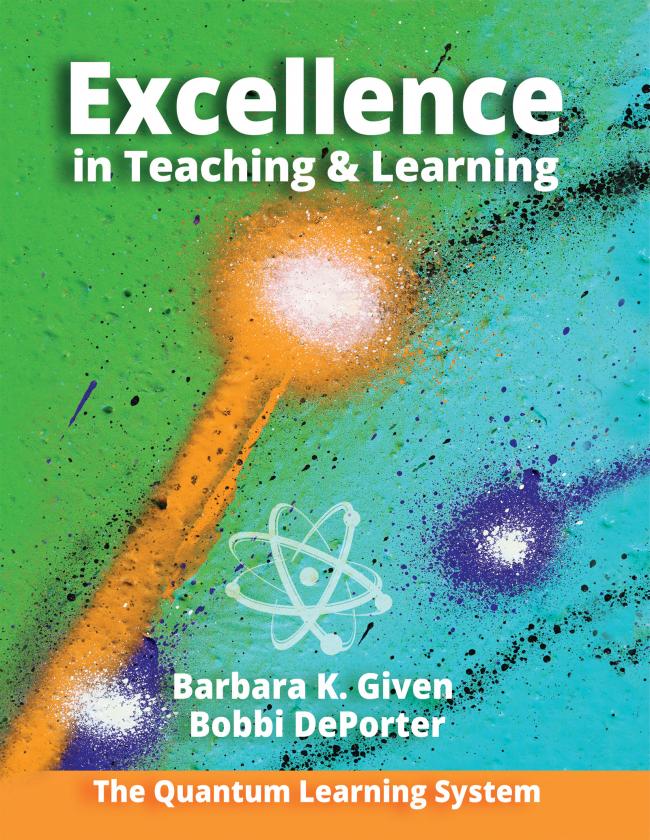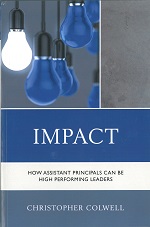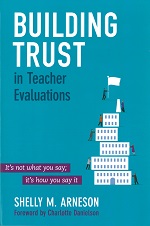Guardians of Equity
Pedro Noguera urges principals to lead the quest for equity by advocating for all of their students and being resourceful in meeting students’ needs.
Principal, November/December 2015
Excellence in Teaching and Learning: The Quantum Learning System
 Barbara K. Given and Bobbi DePorter.
Barbara K. Given and Bobbi DePorter.
Learning Forum Publications, 2015, 322 pp.
Education has been turned upside down and sideways in the past decade. Brain research has given us new information that has educators rethinking all that we do—from how to set up a classroom to how to construct a lesson. Quite frankly, there is so much to know and apply that many of us can get overwhelmed.
The Reflective Principal: School Lessons
By Ayesha Farag-Davis
Principal, September/October 2015
From the time that I graduated from college, every career move has been accompanied by a return to coursework. As a beginning teacher, counselor, and assistant principal, I enrolled in classes as a way to build my capacity and effectiveness as an educator. Therefore, it wasn’t entirely surprising when I enrolled in a doctoral program after taking my first principalship. I pursued
Parents & Schools: Five Ways to Boost Family Engagement
By Cynthia Jackson Small
Principal, September/October 2015
One of the greatest challenges in education today is actively engaging families in schools as partners in the educational process. This is an essential component for promoting schools of excellence with student success in mind. While there is no magic formula for engaging families in education, there are best practices and strategies for bridging home-school partnerships.
Ten to Teen: A Collaborative Learning Culture
By Amanda Yates and Mike Lepene
Principal, September/October 2015
Raising the Bar: Tear Down Invisible Teaching Walls
By Stephanie Johnson and Diane Watkins
Principal, September/October 2015
Principals across the country are consumed with disaggregating the scores from end-of-year state assessments. When there are huge discrepancies on a grade level that cannot be explained away by class groupings, you are left with the question of why some children perform so much better than others with the same ability. Was it that certain children were not taught? If so, why not? The bigger question for some of our children becomes: Why didn’t you teach me?
Practitioner’s Corner: Flipping and Gaming Into the Digital Age
By Christopher Fee
Principal, September/October 2015
When I joined Des Moines, Iowa’s Oak Park Elementary School as principal in 2011, I stepped into a school with strong academic models and high-quality teachers. What was lacking at the school and where I thought I could take our achievement to the next level, however, was technology. When implemented strategically, game-based, adaptive learning really does have a place in the classroom.
Best Practice: Teachers as Coaches Through Peer Observation
By Catherine Beck
Principal, September/October 2015
I learned a powerful lesson in leadership when I was appointed to take over a school that was on the brink of turnaround status. I spent the first year making every last decision. I did not trust my staff and I micromanaged everything and everyone. After all, my staff were the same teachers who had been there the previous years as student achievement declined. Surely it must have been the staff’s fault, right? Wrong.
Leadership for Tomorrow
How to cultivate a mindset of innovation.
By Ben Gilpin and Brad Gustafson
Principal, September/October 2015
“I sure hope this isn’t a session about social media or Twitter,” sighed the principal headed into her next NAESP conference session alongside a colleague. Armed with conference handbags and water bottles, the two continued the exchange until they were out of earshot. Their conversation offers a poignant glimpse into the mindset of many elementary principals who describe themselves as “non-techy.”
Unthink & Unlock Students’ Capabilities
Erik Wahl paints a picture of a way of thinking that could unleash the creativity of educators and students alike.
Principal, September/October 2015
Eliminate Ping-Pong Behavior
3 classroom management strategies that inspire confidence in your teachers.
By Stephen E. Boyd
Principal, September/October 2015
Common Core Meets Uncommon Kids
Finding common ground with students on the autism spectrum.
By Barbara Boroson
Principal, September/October 2015
Teacherpreneurs as Agents of Reform
Teacher leaders who incubate and execute ideas for school reform.
By Barnett Berry
Principal, September/October 2015
The Main Points of Teacher Evaluation
To help teachers grow, principals must take on the combined role of supervisor and evaluator.
By John F. Eller and Sheila A. Eller
Principal, September/October 2015
Adapt and Evolve
A supportive culture of reflection guides teachers toward effective Common Core implementation.
By Aaron Theil
Principal, September/October 2015
Working in K-12 education, whether as an administrator or a teacher, requires a certain ability to adapt to the abrupt changes—to technology, best practices, and standards, for example—that are inherent to our profession. In many cases, these changes can be difficult, but they can also present us with significant opportunities to improve the way we approach teaching and learning.
Ten to Teen: Making Time in the Middle
By Steve Kovach
Principal, May/June 2015
Simply put, we needed extra time. While reviewing the data on student performance, teachers at the rural school I lead in southern Minnesota quickly realized they needed to figure out how to carve out time during an already busy instructional day to help students get the extra assistance they needed.

